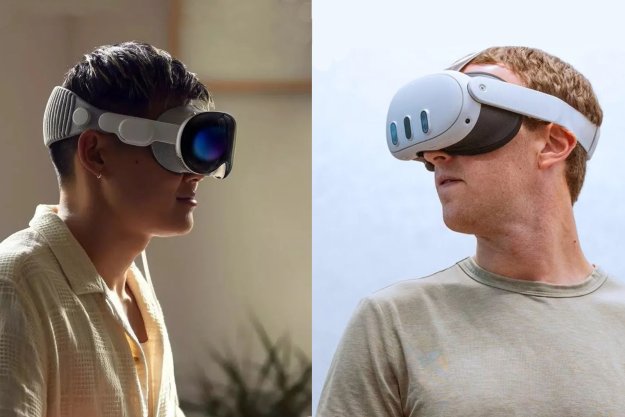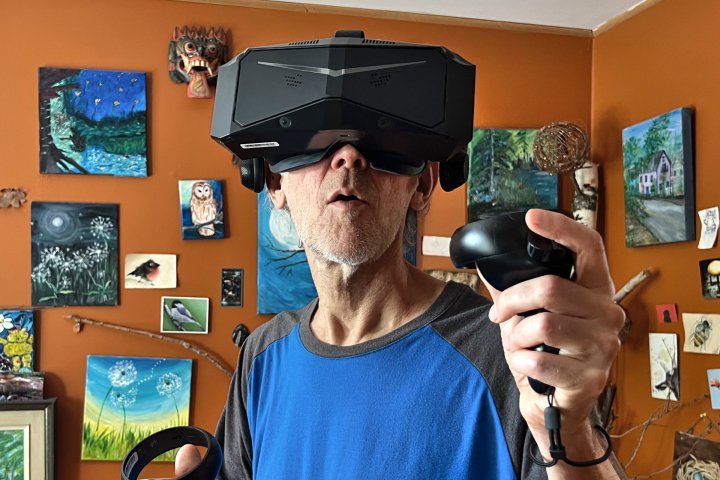
Meta’s Quest 2 longevity is almost supernatural in the VR world. It’s the headset that keeps on giving, but it’s time to retire that classic model released in 2020 and try something new. Ahead of the launch of the Quest 3, I tested the much more expensive Pimax Crystal, a VR headset that puts resolution and fidelity as first priority.
In many ways, it’s a throwback to an older era of VR headsets, requiring a powerful gaming PC to take full advantage of its capabilities. And like every modern PC VR headset, it will outperform and deliver a sharper picture than the stand-alone Quest 2. However, the hassle of plugging in a tether, setting up base stations, and pairing controllers is overwhelming for many gamers. Pimax has a solution for that, and after using it for a while, it made me never want to go back to my Quest 2.
My Pimax Crystal experience
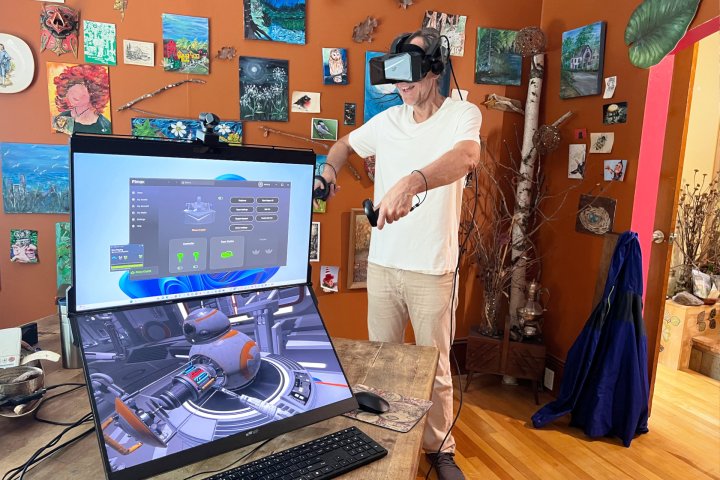
Let’s get this out of the way right off the bat: After using the Pimax Crystal for many weeks, I’ve walked away from the experience very impressed. It provides that immersive VR experience that can still only be replicated when powered by PC graphics. I’ll get into the details of that in a bit, but for now, I’ll just say that you if took this away and replaced it with something like the Quest 2 — I wouldn’t be happy.
I started with a prerelease version several months ago that had some hardware and software problems. That’s common with early access technology, alpha, and beta software. I won’t bore you with the details, but it was certainly a headache to navigate in the early days.
The good news is that since then, Pimax has squashed bugs, improved performance, and added features with each update, making this a reliable device. I can now jump into VR, start playing, and immerse myself in a game without issue.
The end result? A headset that works great for PC VR and exceeds the quality of nearly every other VR headset on the market. My Quest 2 feels like ancient technology by comparison. And when it comes to brass tacks, it’s all about the visuals.
Pimax Crystal for stellar PC VR
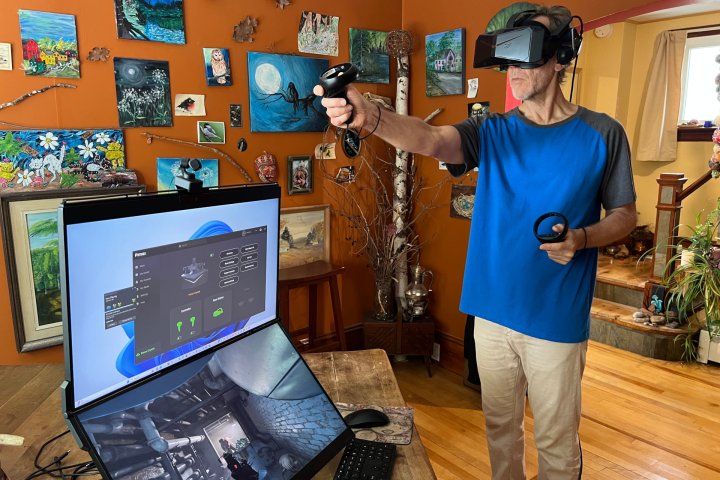
If you’ve heard of the Pimax Crystal, you’ll know that its calling card is the 2880 x 2880 pixel-per-eye resolution and mini-LED backlighting. By definition, the display is one of the most important parts of a VR headset.
While the head-mounted display (HMD) is a critical component, there’s much more to consider. Tracking is essential to virtual reality. For many years, PC VR gamers had to set up two or more base stations around the room that send out invisible pulses to help the headset identify the location and angle of your head and hands in space.
It’s cumbersome, resulting in more cables and further expense. It’s a problem that Meta somewhat conquered in 2019 with the original Quest and its inside-out tracking built into the headset itself. Meta advanced this technology to track your hands without controllers and even figured out an experimental way to track your entire body.
After I installed the software and plugged in the Pimax Crystal, it just worked.
More recently, HTC’s stand-alone Vive XR Elite and Sony’s console-based PlayStation VR2 have joined the list of virtual reality headsets with this feature. The Pimax Crystal is the first PC VR headset to include high-quality inside-out tracking.
After I installed the software and plugged in the Pimax Crystal, it just worked. No other setup is required. If you’re coming from a standalone device like the Quest 2 or even Meta’s best VR headset, the Quest Pro, there’s a potential for a significant leap in image quality. It’s not just about optics either. Despite being a larger, heavier VR headset, the Crystal feels more comfortable than the Quest 2.
The tradeoff, of course, is a higher price tag and the need for a tether. There’s no way around either of those factors.
PC performance
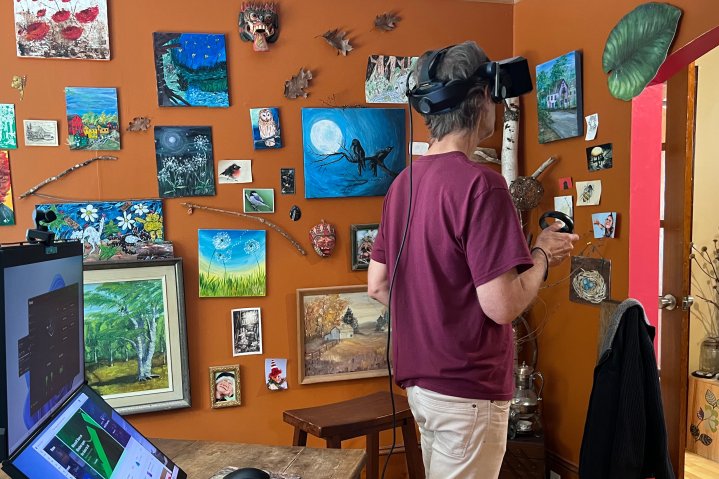
Any VR-ready PC can provide better image quality and smoother gameplay than a Quest 2. Most standalone VR headsets use chips based on smartphone technology. Apple’s Vision Pro is the exception. Its M2 chip should provide MacBook-like performance, but we’re still waiting to see what performance is like.
Meta worked magic to keep the Quest 2 relevant with such modest specifications, but a PC VR headset connected to a computer with a discrete GPU easily outclasses the Quest 2.
The tradeoff is the expense. For the optimal experience with the Pimax Crystal, you need a powerful gaming PC that can support two 2880 x 2880 pixel displays running at 90Hz or higher.
I found pretty quickly that my Nvidia RTX 3060 Ti couldn’t manage it. The simple answer, of course, was to lower the resolution, which means you aren’t getting quite the full experience of what the Crystal can offer.
Having untapped potential isn’t bad, but the requirements needed to achieve maximum quality are worth noting. Pimax lists an Nvidia RTX 2080 as the minimum GPU required but recommends an RTX 3080 or better for best results with the Crystal. Keep that in mind if you planning on giving it a shot.
More Pimax Crystal possibilities
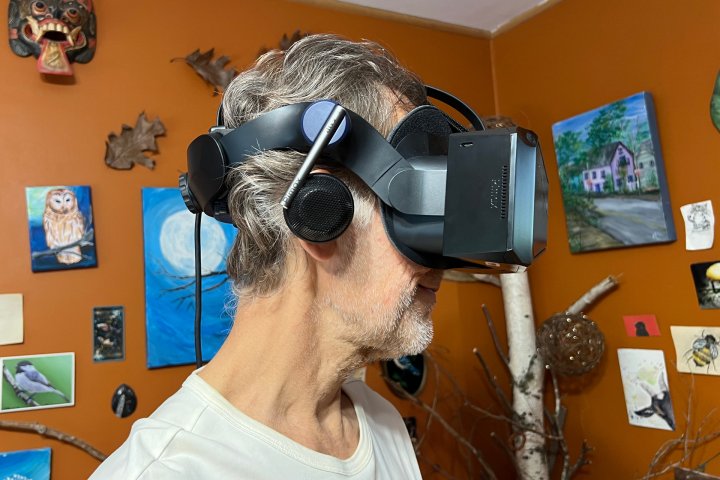
Pimax attempts to find the right balance between cutting edge and bleeding edge — but doesn’t always succeed. The inside-out tracking works well, and image clarity is impressive. However, certain features have experienced considerable delays.
The plan for the Pimax Crystal is a VR headset that will rank among the top performers in every category, with expansion options to meet all needs. So far, it hasn’t worked out that way.
The Crystal was to get a stand-alone mode, eye-tracking, foveated rendering, and interchangeable lenses that traded some pixel density for an ultra-wide field of view (FOV).
At launch, these features were not available. That’s not terribly shocking. It’s becoming standard practice for tech companies to boast about features that rely on software upgrades and accessories that are in development to be released later.
Eye-tracking is more important than many realize.
Eye-tracking lets your virtual avatar look around when you do, providing a more natural appearance. Foveated rendering uses your gaze to adjust graphics fidelity on the fly so the center of your view has maximum quality, while peripheral vision can be lower. That removes some of the GPU’s burden, potentially allowing higher frame rates.
Eye-tracking is more important than many realize. As Apple has shown with its Vision Pro, that data can also serve as input, creating a virtual pointer to simplify interaction.
Pimax recently delivered eye-tracking and foveated rendering in an over-the-air (OTA) update; however, the Crystal’s standalone mode and optional wide FOV lenses will take longer. Pimax has a web page with ongoing Crystal status updates.
The bottom line
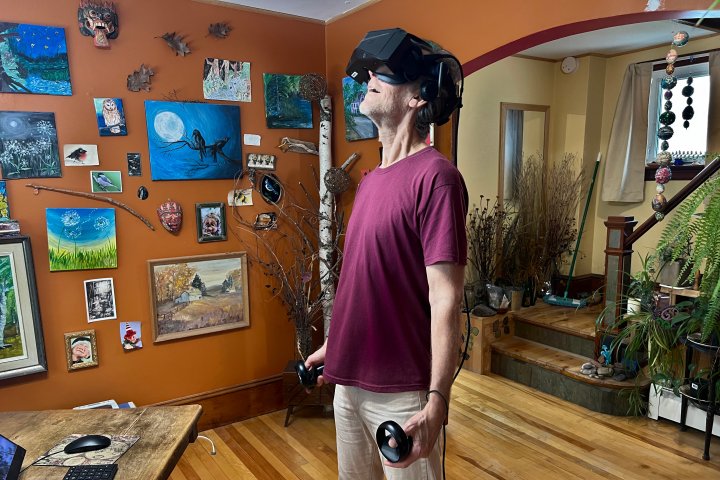
With any exciting new technology, most of us wait for the bottom line before moving forward. And with the Pimax Crystal, considering the price of $1,599 is unavoidable. That’s more than five times the cost of a Quest 2. The two devices have little in common, but as the most popular VR headset in the world, many shoppers will be familiar with Meta’s budget model.
Stepping up to premium headsets, Meta’s Quest Pro is about $600 cheaper, and it can also be connected to a PC to improve graphics fidelity. The Pimax Crystal will be much sharper, though, if you have a computer with sufficient performance. The quality difference was visible in my case, but I’ll need to upgrade my GPU to make it worthwhile.
The Crystal compares most favorably to Varjo’s Aero, an ultra-premium VR headset that costs $1,990 without the required base stations and controllers. And still, the Pimax Crystal tops Aero’s display specifications and matches its comfort.
If you’re one of the few who already own a Varjo Aero, including the base stations and controllers, there’s no need to switch. The image quality would be close, and Pimax hasn’t yet released a standalone mode or the accessories that set it apart from Varjo’s solution.
If you’re a Mac Pro user with a Pro Display XDR display, you might want to wait for Apple’s $3,500 Vision Pro. Even though it’s priced out of reach for most, the Vision Pro is more powerful than any other VR headset and backed by Apple’s robust ecosystem.
It’s worth mentioning that Meta will launch a new model, the Quest 3 in September, so if a budget stand-alone model suits your needs better, hold off for a few months.
My main takeaway, though, is that the Pimax Crystal shows there’s still plenty of room for PCVR. These high-resolution, immersive VR experiences provide the kind of visuals that still just aren’t possible with standalone headsets — even if they will remain a niche product for VR enthusiasts only.
Editors' Recommendations
- 8K VR comes to the Quest 3
- Your Quest 3 just got so much better — for free
- A cheaper version of the Meta Quest 3 now seems more likely than ever
- 3 ways the Quest 3 is better than the Vision Pro
- I’m a VR enthusiast. Here’s why the Vision Pro doesn’t excite me


